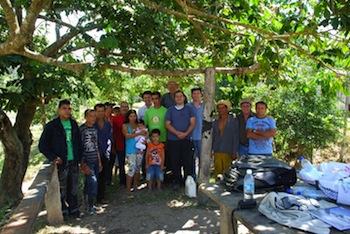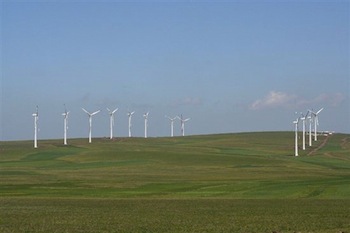Last summer, Microsoft pledged to become carbon neutral and began charging business divisions for the carbon they emit.
Besides driving greater efficiency across the company, the money raised is used to buy Renewable Energy Certificates (RECs) and to back projects that protect the world’s resources.
Microsoft is currently backing 15 diverse initiatives around the world, ranging from biodiversity conservation in Brazil to sustainable agriculture and reforestation in Kenya to a wind farm in China. Other projects are in India, Peru, Guatemala, Cambodia, Turkey and even the US.
"We look for projects which might not have happened without the finance from the purchase of the carbon credits," writes Rob Bernard, Microsoft’s chief environmental strategist, on the company’s Green Blog. "We’ve chosen to invest in carbon offsets because, in addition to helping us offset global emissions, our carbon offset strategy also helps us deliver the added economic, societal and educational benefits that Microsoft is already committed to providing around the world."
Here are four of the projects:
Brazil – A collaboration between local communities and NGOs in Brazil’s Acre state aims to preserve about 86,500 acres. The Acre Amazonian Reforestration Project supports farming practices focused on growing sustainable profitable crops that don’t exacerbate deforestation; organically rearing pigs; and using rotational cattle pastures.

Kenya – The Meru Nanyuki Community Reforestation project near the base of Mt. Kenya trains farmers in better land management practices. Members receive annual payments for planting trees that help sequester carbon, while providing them with a source of income for the future – in the form of food from fruit, fuel from deadwood and branch trimmings, and medicines from barks. The program also focuses on beekeeping and erosion control. There are more than 53,341 members and more than 6 million trees have been planted.
Mongolia – The focus here is on helping poor households reduce their heating fuel requirements and costs by up to 60% through more efficient cookstoves and improved insulation for yurts. Currently reaching 100,000 people, the project planners hope to double their impact over the next three years.
China – The 50 megawatt Chifeng Wind Power Project generates 130,000 megawatt hours (MWh) of energy a year. Over its lifetime, it will help the world’s biggest greenhouse gas emitter offset more than 1 million tons of carbon.

All the projects selected by Microsoft are independently validated and verified by The Carbon Neutral Company.
Aside from investments like this, Microsoft continues to fund ambitious pilots that are testing ways of using powerful analytics software to create smarter, greener buildings without costly retrofits. On its own campus, it has already saved more than $1.5 million in energy costs through this technology.
As of July, Microsoft is the second largest green power user in the US (after Intel) – purchasing more than 1.9 billion kilowatt-hours a year, totaling about 80% of its electricity use.
Read our article on Microsoft’s internal carbon price and other steps the company is taking to reduce its footprint. It has also taken on the massive project of building a computer program that will map the world’s ecosystems.
Here is Microsoft’s Green Blog:
